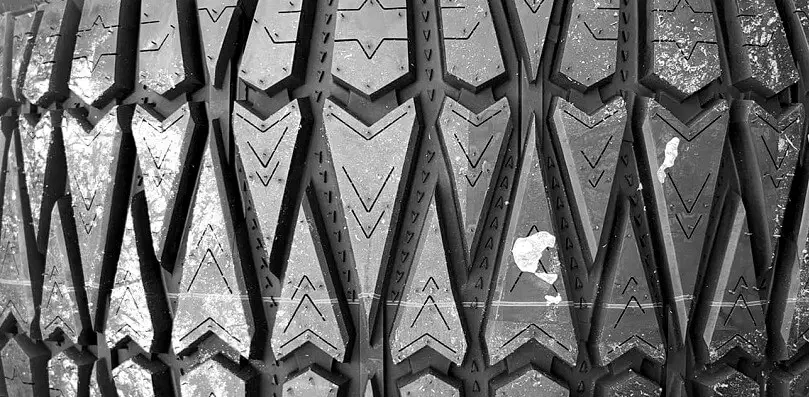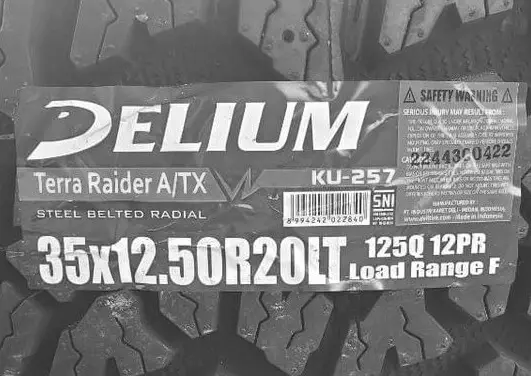Tire Size 35×12.50r20 in Metric

Have you ever wondered what the cryptic jumble of numbers and letters on the side of a tire mean? What does 35×12.50r20 stand for, and why is it crucial to understand? It’s time to unravel the mystery and put these tire sizes into context, making sense of the language wheels speak.
Dimension Breakdown
Before understanding the tire size, we need to decode its distinct parts. The string “35×12.50r20” may seem complicated, but each part tells an important story about the tire’s size and fitment.
- 35: The “35” indicates the overall diameter of the tire in inches when fully inflated and not under load. This measurement spans the distance from the outer edge of the tire’s tread on one side to the outer edge on the opposite side.
- 12.50: This number specifies the tire’s width in inches, measured across the broadest point of the tire’s outer surface, also known as the section width.
- R: The “R” signifies that the tire is of radial construction, meaning its ply cords are arranged at 90 degrees to the direction of travel for improved strength and flexibility.
- 20: The “20” stands for the wheel’s diameter in inches. This figure represents the wheel size that the tire is designed to fit.
35×12.50r20 in inches
| Feature | Metric |
|---|---|
| Tire Diameter | 35.0″ |
| Tire Section Width | 12.5″ |
| Rim Width Range | 20″ x 8.5-11″ |
| Sidewall Height | 7.5″ |
| Circumference | 109.9″ |
| Revs/Mile | 577 |
Conversion Process
Understanding the dimensions is half the battle. Now, let’s tackle the next challenge: converting these measurements from inches to millimeters, the standard in many countries.
- Overall Diameter: Multiply 35 inches by 25.4 to get 889 mm.
- Tire Width: Multiply 12.50 inches by 25.4 to get 317.5 mm.
- Wheel Diameter: Multiply 20 inches by 25.4 to get 508 mm.
For Sidewall Height and Aspect Ratio, we need a bit of math:
- Sidewall Height: In inches, calculate it as (Overall Diameter – Wheel Diameter) / 2. That’s (35-20)/2 = 7.5 inches, or 190.5 mm when converted.
- Aspect Ratio: It’s (Sidewall Height / Tire Width) * 100%. Hence, (7.5/12.5) * 100% = 60%. This means that the tire’s height is 60% of its width.

Finding a Close Metric Equivalent
In the metric system, tire sizes are expressed as Width/Aspect Ratio/Rim Diameter. Based on our conversions, a close metric equivalent for the 35×12.50r20 tire would be 318/60r20.
However, metric tire sizes are usually rounded to the nearest whole number, so a 315/60r20 would be a common metric equivalent.
Practical Applications
The 35×12.50r20 tire size is widely used in large SUVs and pickup trucks like the Ford F-150 or Chevrolet Silverado. These vehicles demand larger and wider tires to handle their size, weight, and off-road capabilities.
For instance, they’re excellent for driving through rough terrains like muddy fields, rocky roads, and sandy beaches.
What Is Equivalent To A 35×12.50r20?
In metric terms, the tire size commonly given as 35×12.50r20 translates approximately to 318/60r20. However, it’s crucial to point out that this particular size is seldom found in retail stores.
A more commonly encountered equivalent in metric terms is 315/60r20. This dimension is closely similar to the 35×12.50r20 tire size, and it’s typically easier for shoppers to find.
How Tall Are 35×12.50r20 Tire Size?
The ’35’ stands for the overall diameter of the tire, which is 35 inches. Therefore, the tire’s height from the ground to the top of the tire (when mounted on a wheel and inflated) is approximately 35 inches.
How Wide Is A 35×12.50r20 Tire?
The ‘12.50’ is the width of the tire, and it is measured in inches. So, a 35×12.50R20 tire is 12.50 inches wide.
What Size Rim Fits 35×12.50r20?
The ’20’ signifies the diameter of the wheel (rim) that the tire fits onto. Therefore, a 35×12.50R20 tire fits on a 20-inch rim. The figures provided are the standard, nominal sizes. Always ensure you check with your tire provider for exact specifications.
Summary
Understanding tire sizes, specifically the 35×12.50r20, can seem daunting, but the process becomes clear once you know how to break down the measurements and convert them.
Knowing these dimensions and their metric equivalents can help you make informed decisions when replacing your tires or when seeking different performance characteristics.
Next time you look at those mysterious numbers and letters on a tire, you’ll understand the language and make sense of what it means for your driving experience.

Meet Caitlin McCormack, a Tire Size Expert and Blogger Passionate About Everything Related to Tires. With Years of Experience in the Tire Industry, Caitlin Has Become an Expert in Tire Sizes and Their Impact on Vehicle Performance.
